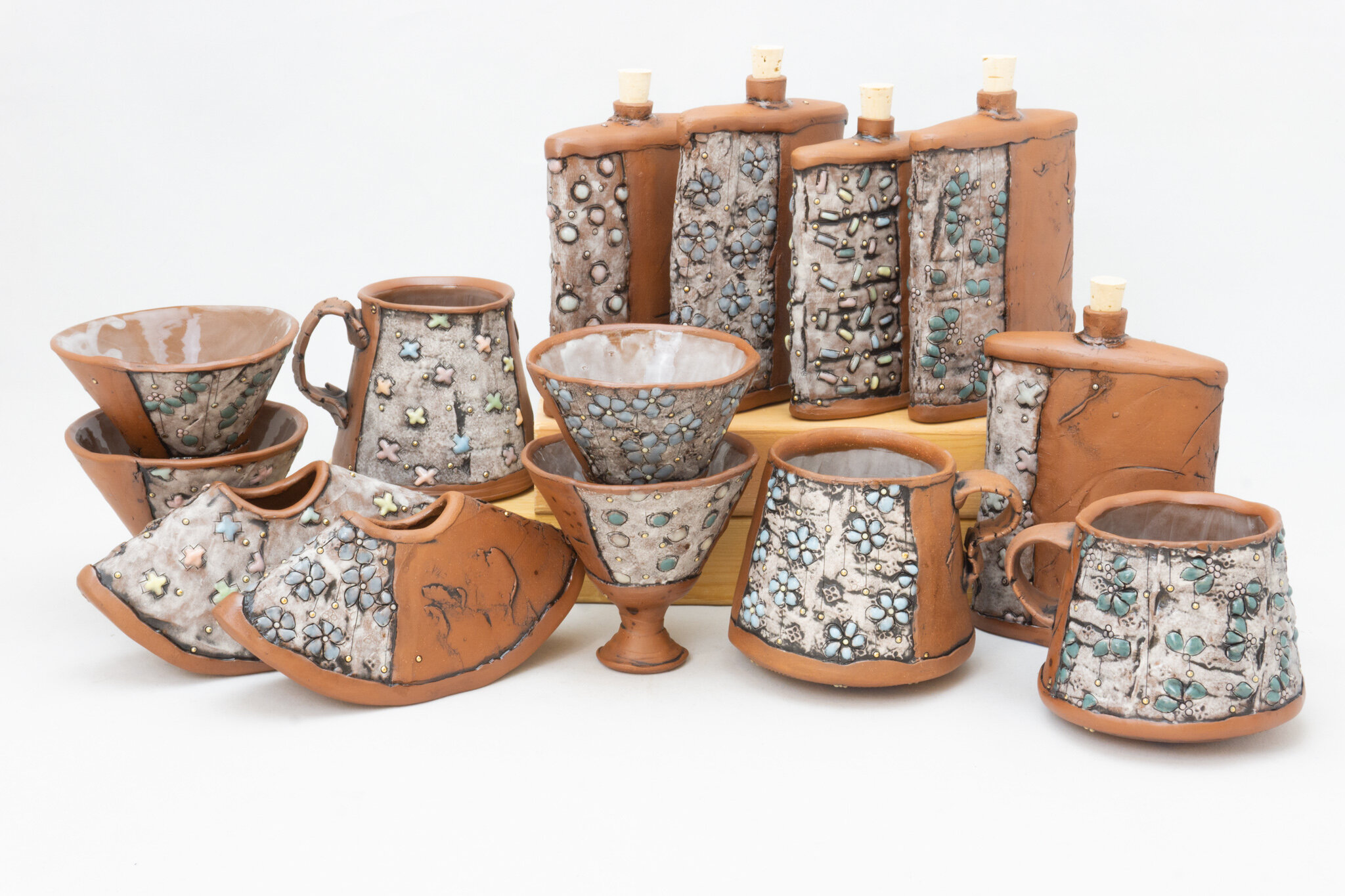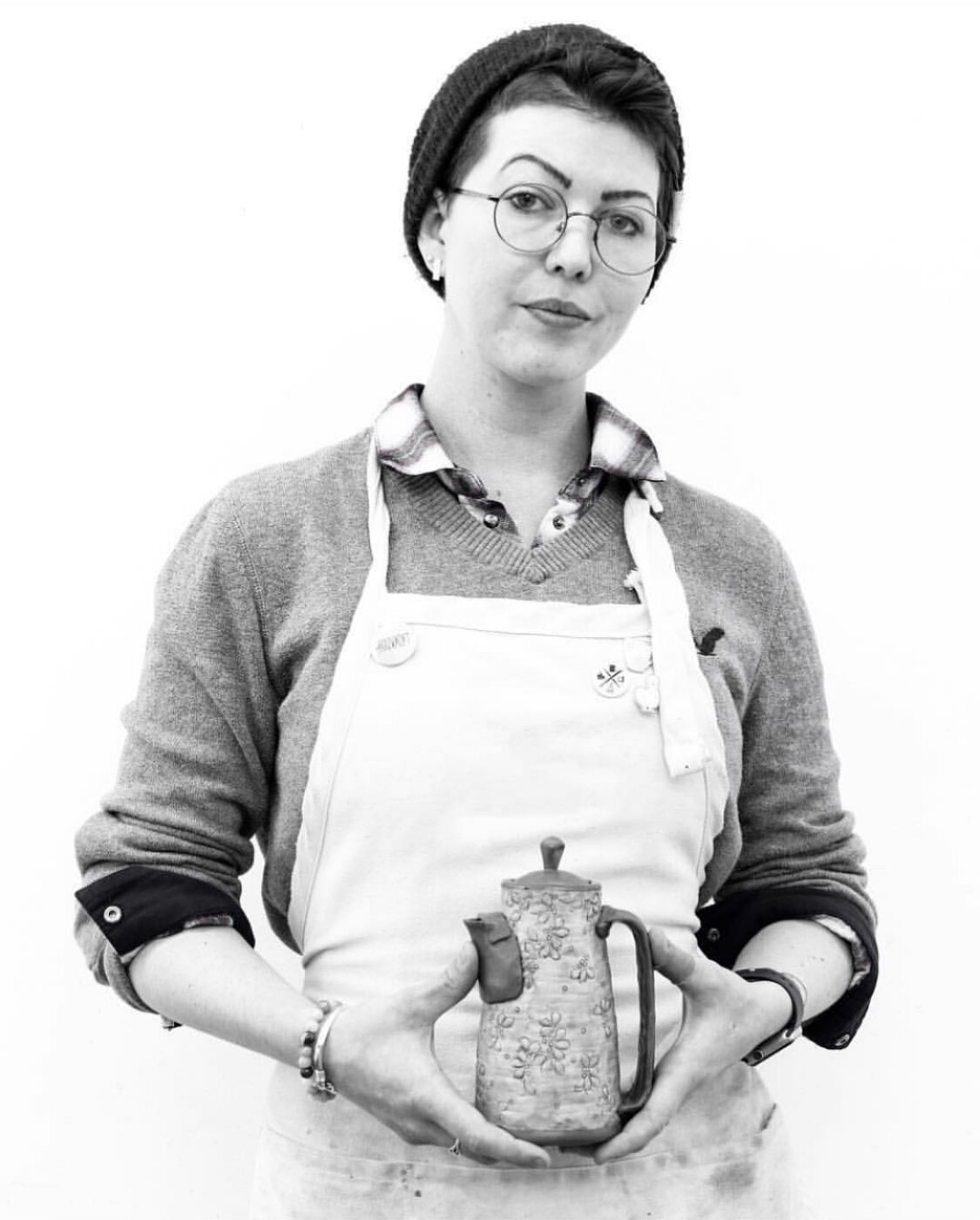Samantha Oliver
BIOGRAPHY
Samantha Oliver is a ceramic artist working and teaching in Tryon, NC. She received her BFA with a concentration in ceramics from Winthrop University in Rock Hill, SC, and a special ceramic studies residency at William and Mary in Williamsburg, VA. Between 2015 and 2020, Samantha attended a residency at Brockway Center for Arts and Technology, Penland School of Crafts Winter Residency, Pentaculum at Arrowmont School of Crafts, and has taught workshops at The Bascom: Center for Visual Arts in Highlands, NC and at Tryon Arts and Crafts School in Tryon, NC. She has recently been published in regional magazine Asheville Made.
ARTIST STATEMENT
My work is a union of pattern, repetition, and tactile surface treatment that is stimulating to the touch. Texturing my pieces allows me to experiment with line quality, rhythm, and movement. My pots incorporate objects and imagery found in nature, which have personal value to me.
I am motivated by floral patterns I would find in my childhood homes. My family lived a very transient life; we would move to a new town every couple of years. With my environment constantly changing, it was easy for me to see the little consistencies, like the floral wallpaper borders that ran along the ceilings around every new house we moved into. Whether it be wallpaper, curtains, or dinning room linen napkins that my mother insisted we use every meal, the repetitive floral design on these items have made its way into the earliest memories of my life.
I believe that the social and communal aspects of functional pottery are significant. The shape, design, and function of a pot inform its surroundings; it is able to turn a social gathering into a ceremonial setting. My intention is to create pots that beg to be held and used in a setting that brings people together in conversation and fellowship. I want those who experience my work to touch, hold, explore, and most importantly, find a personal use for the work.
Q&A WITH THE ARTIST
Carbondale Clay Center (CCC): Where does your creative process begin (i.e. sketchbook, specific routine, image reference, etc.)? What considerations do you think about when creating drinking vessels?
Samantha Oliver (SO): My process begins with considering the intention of the vessel. Using my own interpretation of what I enjoy drinking, I begin to sketch out forms either on paper or out of small rough models of clay. I find if I ever get creatively stuck on a form, it is helpful to reference historical pots. I then consider the overall form, from the belly of a cup, the angle of the lip, and the shape of the handle. All of these aspects of a vessel need to be thoughtfully considered, because they can affect the experience of their intended use. I wish for my work to be used with comfort and ease, allowing the user to explore the textures and details upon the surface, or to just sit back and enjoy their drink in a pleasant cup.
CCC: Is there a certain type of drinking vessel that you prefer making? Or one that seems to always be sought after by customers?
SO: My customers gravitate towards tumblers and mugs, but my recently my favorite forms to make are aperitif cups. I really enjoy playing with the forms and surfaces. Aperitif cups are also so darn cute.



